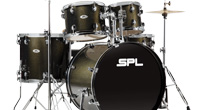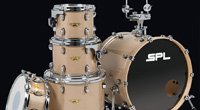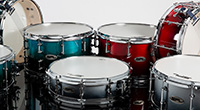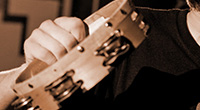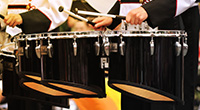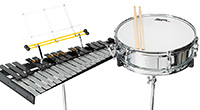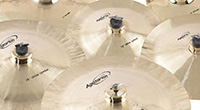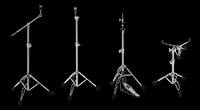Hardware
In 1909, percussionist William F. Ludwig designed the first modern foot-operated bass drum pedal. Suddenly, drummers hands became free to play anything within reach, and the notion of percussion mounting was born. One drummer (rather than multiple percussionists) could now sit behind the kit, and by using their feet and hands, play multiple instruments. As drum kits have evolved into more complex, multi-piece systems, so has the versatility of modern hardware. By 1966, drummers such as Ginger Baker and Keith Moon began exploring the possibilities of extended kits. Drummers now have two basic hardware choices when it comes to mounting their equipment: individual stands or a drum rack system. Each method has its own advantages and is suited for different situations.
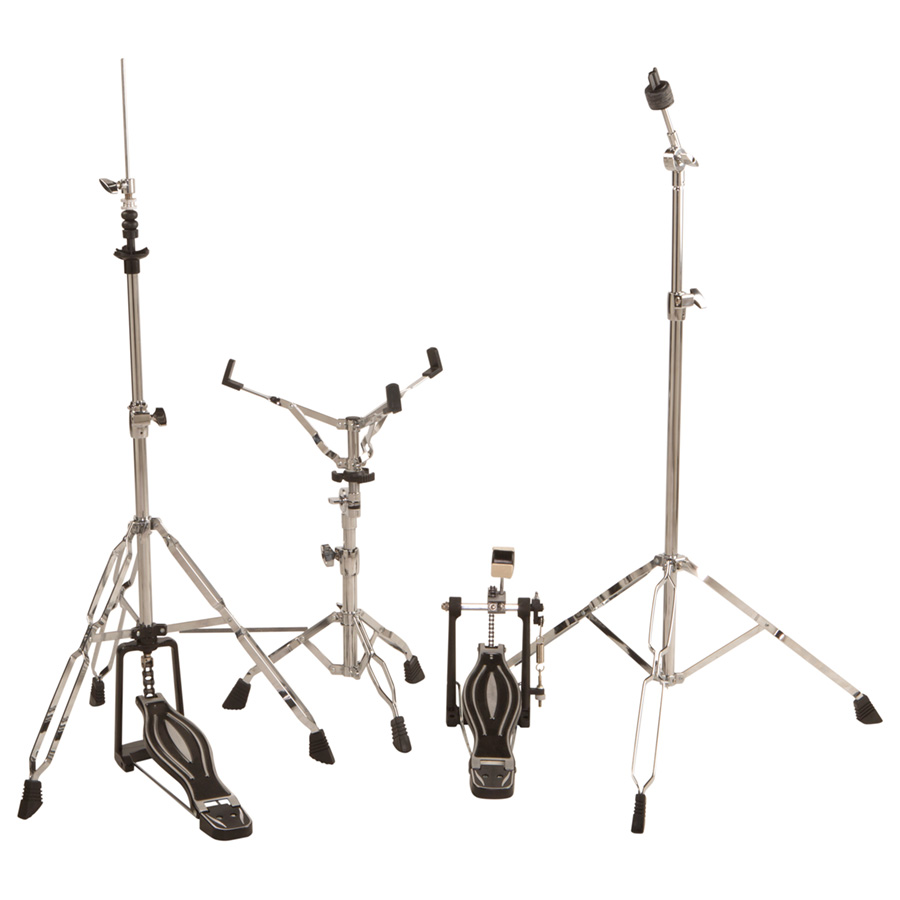
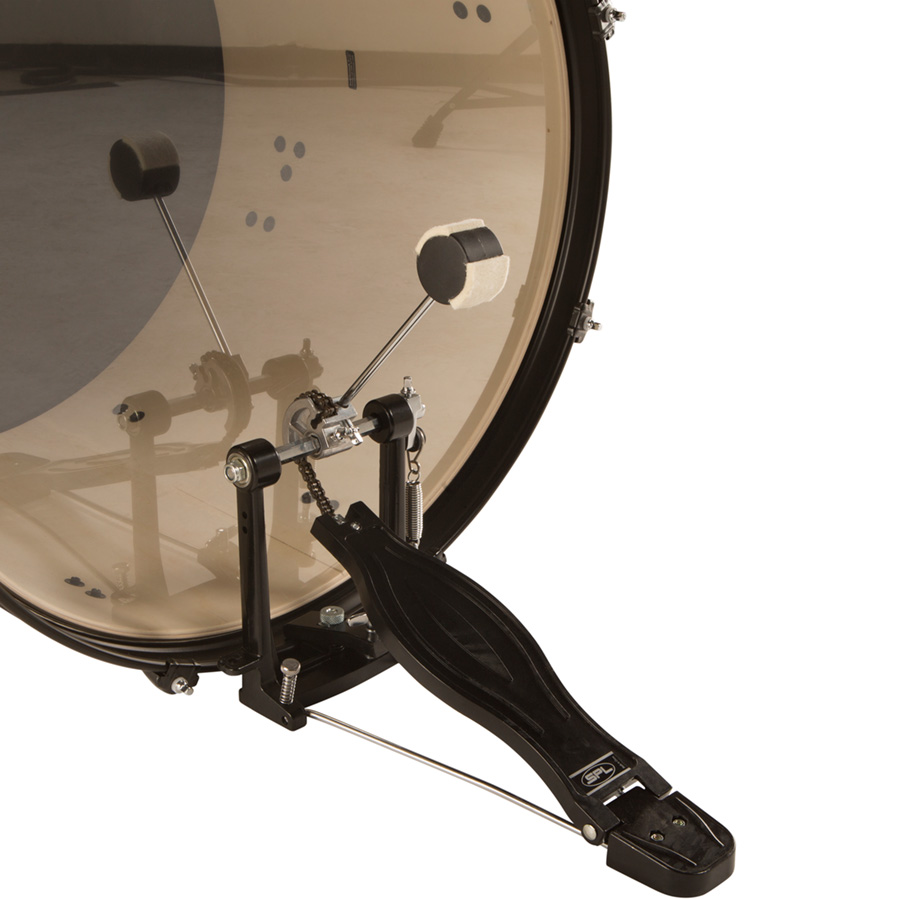
Racks help those drummers who use a large amount of percussion, or who play on large stages, setting up every item of their kit in the same exact position every time. Racks also clean up the look of the kit. Mounting toms on a rack instead of on the bass drum removes the weight from the shell, letting it resonate more freely for a bigger sound. Set-up is faster since your entire hardware rig can be moved in one shot. Generally, the bigger your set, the more useful a drum rack is.
For smaller stages, standard five-piece setups, or for drummers who like to vary the configuration of their kits, traditional stands may be more effective than drum racks. If the configuration of your drum kit changes based on the gig you’re playing, individual stands and multi-clamps might be the solution. And because stand design has improved so drastically, they offer virtually limitless positioning possibilities.

